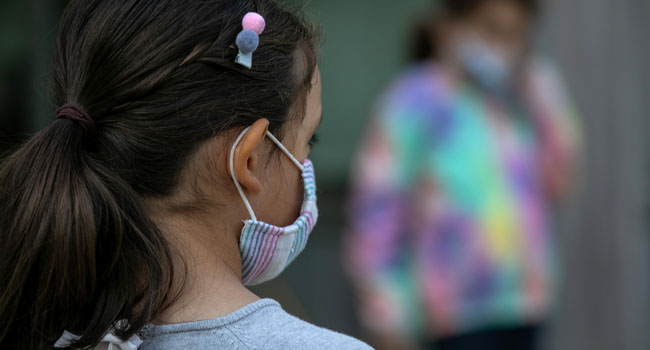US: Nearly 280,000 school-aged children have contracted COVID-19 – CDC reveals


At least 280,000 school-aged children were infected with the novel coronavirus between March 1 and September 19, detailed data released on Monday in a report by the US Centers for Disease Control and Prevention (CDC) revealed
The figure, as gathered accounted for roughly four per cent of the total US caseload over this period, with children aged 12-17 approximately twice as likely to be infected as those aged 5-11.
The rate of new cases rose steadily during the spring and then shot up over the summer, peaking on July 19 with an average weekly incidence of 37.9 per 100,000.
The new cases then plateaued for several weeks before declining in late August — though it appears they are now rising again towards summer levels.
The authors wrote that the data helped establish a baseline for monitoring trends of Covid-19 infection as some schools return to in-person learning now and in the coming months.
“School studies suggest that in-person learning can be safe in communities with low SARS-CoV-2 transmission rates, but might increase transmission risk in communities where transmission is already high,” they said.
The report provides more data for trends that were already known, such as that Hispanic and black minority groups are at heightened risk of developing severe Covid-19, as are children with underlying conditions.
Overall, 277,285 children were infected, 3,240 hospitalized (or 1.2 percent); 404 admitted to intensive care (0.1 percent); and 51 died (0.01 percent).
The real rates of hospitalization, intensive care admission and death are likely to be even lower in reality because the actual number of children infected was probably far higher and not recorded, given the number of asymptomatic cases.
Though the risk to children is relatively low, health experts are more worried about the onward transmission risk children could present to their parents or grandparents.
Children in the 5-11 group accounted for 101,503 cases and 20 deaths while those in the 12–17 group accounted for 175,782 cases and 31 deaths.
Chronic lung disease — which includes asthma and chronic obstructive pulmonary disease (COPD), for example — was the most prevalent underlying condition.
The rates of infection varied greatly from region to region and the authors emphasized that local authorities should closely monitor the situation to arrive at the best decision about in-person learning.
AFP
Recent Posts
Court Strikes Out Falana, Falz’s N1bn Defamation Suit Against Verydarkblackman
A Lagos High Court sitting in Ikeja on Tuesday struck out the defamation suit…
FG Declares April 18, 21 Public Holidays for Easter Celebration
The Federal Government has declared Friday, 18 April and Monday, 21 April 2025 as public…
FAAC Shares ₦1.578tn to FG, States, LGs for March Allocation
The Federation Account Allocation Committee (FAAC) has disbursed a total sum of ₦1.578 trillion to…
Makinde Hints at Presidential Ambition, Says Focus Remains on Oyo People
Governor Seyi Makinde of Oyo State has voiced confidence in his ability to lead Nigeria,…
Pandemonium as Irate Investors Storm CBEX Office in Ibadan
There was pandemonium on Tuesday at the Ibadan outlet of CBEX, a digital trading asset…
Pandemonium as Irate Investors Storm CBEX Office in Ibadan
There was pandemonium on Tuesday at the Ibadan outlet of CBEX, a digital trading…